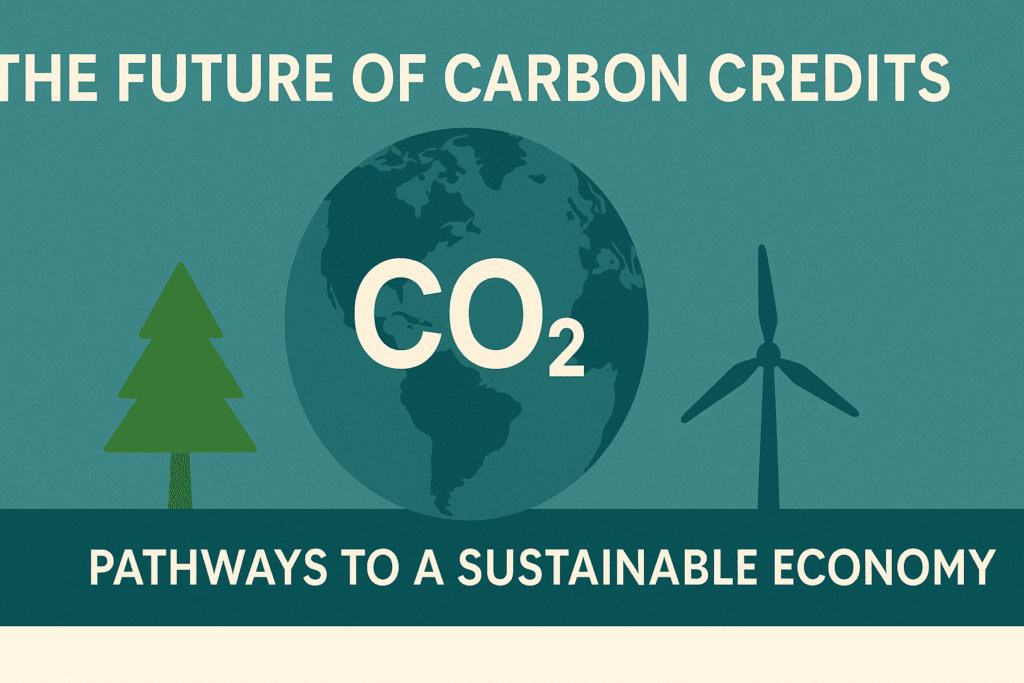Carbon credits have emerged as one of the most important financial instruments in the global effort to fight climate change. They offer a mechanism to price carbon pollution, incentivize low-carbon technologies, and fund nature-based solutions. But as the climate crisis deepens and the global carbon market evolves, what does the future of carbon credits look like? Let’s explore the trends, opportunities, and challenges shaping their trajectory.
Growing Demand Driven by Net-Zero Pledges
More than 140 countries and thousands of corporations have announced net-zero targets for mid-century. To meet these commitments, organizations must reduce emissions drastically. Yet not all emissions can be eliminated quickly. This gap drives demand for carbon credits—a way to offset unavoidable emissions while transitioning to greener operations.
Experts predict that the global voluntary carbon market could grow to $50 billion by 2030, with credits increasingly tied to high-quality, verified projects. This growth will not only fuel climate action but also create new revenue streams for developing countries that host carbon projects.
Technology Integration and Transparency
One of the biggest criticisms of carbon credits has been the lack of transparency and double-counting. The future will see technology play a central role:
- Blockchain-based registries will make transactions tamper-proof and traceable.
- AI and satellite monitoring will enhance the measurement, reporting, and verification (MRV) process.
- IoT sensors and drones will enable near real-time tracking of carbon sequestration in forests, farms, and wetlands.
Together, these innovations will strengthen trust in carbon markets, ensuring buyers and regulators have confidence in credit integrity.
Shift Toward Nature-Based and Agriculture Solutions
While renewable energy projects once dominated carbon markets, the future lies in nature-based solutions (NbS) and climate-smart agriculture. Projects such as mangrove restoration, biochar production, regenerative farming, and improved cookstoves are not only effective in carbon sequestration but also deliver co-benefits like biodiversity protection, livelihood support, and climate resilience.
Carbon credits will increasingly act as a bridge between climate action and sustainable development goals (SDGs), particularly in rural economies.
Regulatory Evolution and Market IntegrityThe voluntary carbon market has long operated alongside compliance markets, but the lines are blurring. With Article 6 of the Paris Agreement coming into effect, international rules now provide a framework for carbon trading between countries. This will:
- Enhance accountability in credit issuance.
- Reduce risks of greenwashing.
- Create more unified global standards.
However, the future will also demand stricter oversight. Only high-quality credits—those that represent real, additional, and permanent reductions—will retain value.
Pricing Trends and Market Dynamics
Carbon credit prices have historically been volatile, with some selling for just a few dollars. But as demand surges and supply of high-quality credits remains limited, prices are expected to rise significantly. Some analysts predict prices could reach $50–$100 per ton of carbon dioxide by 2030.
This will reshape corporate strategies. Instead of relying heavily on offsets, companies will prioritize in-house emission reductions to manage costs, reserving carbon credits for hard-to-abate sectors like aviation, shipping, and cement.
Challenges Ahead
Despite optimism, several challenges remain:
- Greenwashing Risks: Companies may misuse credits to claim carbon neutrality without real emission cuts.
- Equity Concerns: Smallholder farmers and local communities may struggle to access carbon markets without proper capacity-building.
- Permanence Issues: Natural solutions like forests are vulnerable to fires, pests, or deforestation, threatening the durability of carbon storage.
The future of carbon credits depends on how well these challenges are addressed with stronger policies, capacity-building, and scientific rigor.
Conclusion: Toward a Carbon-Conscious Future
The future of carbon credits is both promising and complex. They are not a silver bullet, but when designed with integrity, transparency, and inclusivity, they can accelerate the global shift toward sustainability.
In the coming decades, carbon credits will evolve from being just an offsetting tool to becoming an integral part of climate finance, linking corporate responsibility, government policy, and community development. The challenge for all stakeholders is to ensure they deliver real climate impact—because the planet cannot afford anything less.

